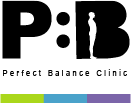Do you suffer from muscle soreness days after your workout or activity? Is this holding you back from further training, or is your performance suffering? If you have answered yes to these questions, then this blog is for you! Read below to learn more about the importance of nutrition for DOMS and make the change today.
What is DOMS?
Delayed onset muscle soreness can affect anyone, from athletes to beginners, and those who have not engaged in any physical activity or sports for a long period.
This condition is a pain in the muscles that starts after a workout, or in some cases a sports activity. This differs from acute soreness as acute pain will generally ease after you have stopped the activity, and is caused by the lactic acid buildup in the muscles.
DOMS on the other hand can happen a day or two after the activity and increase in pain 3-4 days after.
What are the symptoms of DOMS?
Symptoms include;
- Muscle fatigue
- Swelling in the area of pain
- Reduced range of motion
- Stiffness
- Muscles tender to the touch
The symptoms mentioned above are caused by the inflammatory response that occurs in our body; when you experience stiffness and swelling in the muscles, an influx of immune cells are released to remove any damaged tissues and also to repair tears in the muscle fibres.
I am an athlete, should I try and reduce my DOMS for better performance?
This depends on the time of your training; if you are working to improve your performance, then it is recommended to let the muscle damage and repair, as mentioned in the cycle above. To get stronger, muscles need to be stressed until they break down. As a result of the damage, they naturally repair and build stronger. Many athletes use this technique (with the supervision of an expert trainer) to improve their athleticism.
What can I eat to improve my DOMS?
This will vary from individual to individual, but generally, your diet should include good quality protein to support the muscle repair cycle; additionally, whole grains, fruits, vegetables, and healthy fats (particularly those rich in omega-3s) should also be incorporated.
Protein
Aim for 1.2-1.4g of protein for each kg of your body weight; for example, between 90-140g for a 75kg person.
Try and eat two to three servings of protein every day. If you are vegetarian or vegan, then opt for different plant-based sources in each serving.
Consume protein from organic meat, wild-caught, oily fish, dairy products (if tolerable), nuts, seeds, and legumes.
Below are examples of protein sources per 100g.
- Chicken breast, grilled and without skin – 32g
- Lean beef steak, grilled – 31g
- Canned tuna – 23.5g
- Grilled salmon – 24.2g
- Grilled mackerel & cod – 20.8g
- Eggs – 12.5
- Cheddar cheese – 25.4g
- Kidney beans – 6.9g
- Red lentils – 7.6g
- Chickpeas – 8.4g
- Oatmeal – 11.2g
- Almonds – 21.1
- Walnuts – 14.7g
Carbohydrates
Servings will vary depending on the type of training and activity; as a general guideline around 3-12 grams of carbohydrates per kg of body weight.
-
- Barley
- Brown rice
- Buckwheat
- Bulgur
- Millet
- Oatmeal
- Quinoa
- Whole-wheat bread & pasta
Fats
Below are some examples of healthy fats that you should incorporate into your diet.
Consume between 2-3 foods from each list every day, depending on your energy requirements.
- 2 eggs
- 1 pot of greek yoghourt
- 200g coconut milk
- ½ avocado
- 6 olives
- 2 teaspoon butter (for cooking or spreading)
- 1 tablespoon of olive oil (low temp cooking)
- 100-145g oily fish (salmon mackerel, herring, sardines, trout)
- 100g tofu
- 30g mixed nuts
- 100g hummus
Fruits and vegetables
Try to eat as diversely as possible, including the list below once a day.
- Beetroot: Contains nitric oxide, which increases oxygen flow to the muscles. Also has antioxidant and anti-inflammatory betalains.
- Tart cherries – An excellent source of anthocyanins, which is in the polyphenol family; it holds both anti-inflammatory and antioxidant properties that are known to reduce post-exercise pain with muscle function, and decrease the amount of muscle damage.
- Pomegranates: Contains ellagitannins, a type of polyphenol with antioxidant and anti-inflammatory properties
- Pineapple: This fruit has an enzyme called bromelain which helps to break down protein, reduce soreness, and shorten recovery time. This is because bromelain reduces the inflammatory cascade that follows strenuous exercise.
Supplements
- Omega 3 fatty acids – Anti-inflammatory properties, as mentioned above.
- Turmeric – Active compound is curcumin, known to alleviate soreness and inflammation.
- Vitamin D – Essential in regulating the immune system, and in the muscle repair process.
- L-glutamine – Studies find that consuming the amino acid L-glutamine may improve muscle function and reduce markers of muscle damage after heavy exercise.
If this resonates with you then…
Take advantage of our 15-minute sessions either with a Nutritionist, designed to give you the support you need with your concerns and to get you started on your road to recovery. Find very quick and effective results!
This article was written by our team of specialist therapists at Perfect Balance Clinic. If you would like more specific advice about how our team can help you with this condition or symptoms you may be having, please complete the contact form below and one of the team will get back to you shortly.
References
British Nutrition Foundation. 2020. Nutrients, Foods And Ingredients. [online] Available at: <https://www.nutrition.org.uk/nutritionscience/nutrients-food-and-ingredients/protein.html> [Accessed 21 October 2020].
Owens et al. Exercise-induced muscle damage: what it is, what causes it and what are the nutritional solutions? Eur J Sport Sci. 2020 October https://pubmed.ncbi.nlm.nih.gov/30110239
Harty et al. Nutritional and supplementation strategies to prevent and attenuate exercise-induced muscle damage: a brief review. Sports Medicine Open. 2020 October (1), 1 https://pubmed.ncbi.nlm.nih.gov/30617517




